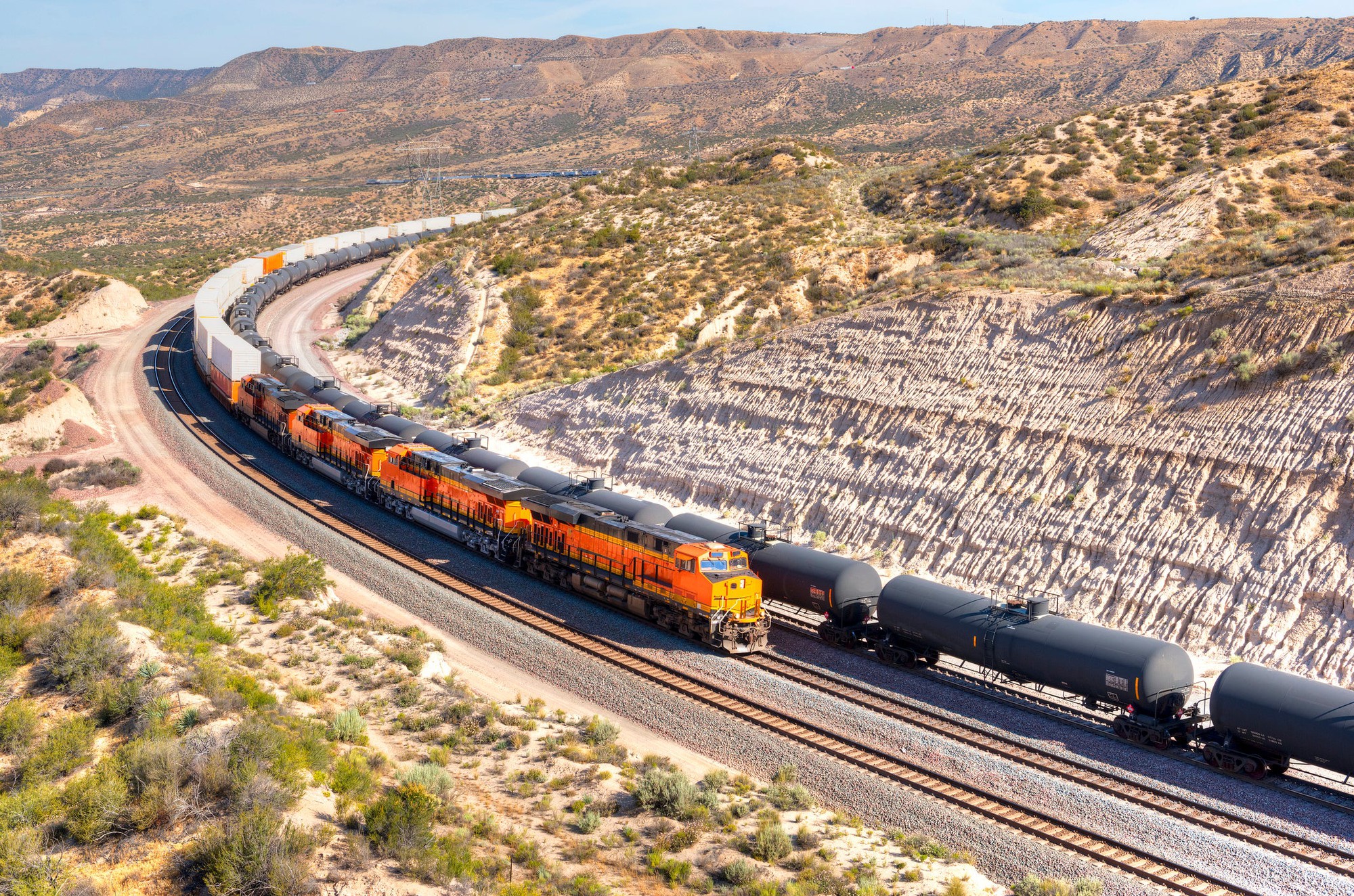On this day in economic and business history...
The golden spike sank into the earth at Promontory Summit in Utah on May 10, 1869. The Transcontinental Railroad was complete, joining the east and west of a sprawling 3,000-mile wide nation. Two railroad enterprises, the Union Pacific (UNP +0.18%) and the Central Pacific, had been built at a frenzied pace since shortly after President Abraham Lincoln's signature approved federal funds for construction in 1862. Both railroads were created to service this legislation, with Union Pacific building west from the Missouri River as the Central Pacific struck out east from Sacramento.
The 1,900-mile line, built in only six years, was, as Howard Means writes in Money and Power: the History of Business:
... the Apollo Project of the 19th century -- one of those rare moments in history when discovery and technology seems to be colliding with destiny. National pride was at stake, and national aspiration, and something bigger still: Just as the manned landing on the moon would do, the railroad conquered an unknown world, planted a first tentative foot in an unknown space. Only those present could see the final spike of iron, clad in silver and gold, being driven into the last link of rail ... but the event was broadcast by telegraph and followed by Americans as avidly -- and greeted as enthusiastically -- as Neil Armstrong's lunar 'giant leap for mankind' almost exactly 100 years later, on July 20, 1969.
The railroad had been contemplated for decades, with talk starting only shortly after the first steam-powered railroads began to shuttle across Great Britain, and then across the eastern United States. California's gold rush, and rapid attainment of statehood, further inflamed this talk, and by the time the Civil War broke out, a transcontinental railroad began to be seen as vital to national security.
The Eastern line was championed by Thomas C. Durant, officially the Union Pacific's vice president, but its true guiding force in reality. Durant's other notable contribution to American business is the Credit Mobilier construction company, created to finance Union Pacific's westward expansion while simultaneously feathering the nests of Durant and his compatriots. It is now enshrined in infamy as one of the most widespread political financial scandals in American history.
The Western line counted Leland Stanford among its principal backers. Unlike Durant, Stanford attained lasting success, first as governor of California (a tenure which coincided with the beginning of construction), and later as the founder of Stanford University, the development of which he financed with what would today be worth over $1 billion. Clearly, there were incredible fortunes to be made for the champions of the railroad, which was to be expected -- according to Means, the federal government spent over 10% of its budget on the railroad during the years of its construction, a commitment that dwarfs the 4% of federal spending given to NASA at the height of the Apollo program, and which is made all the more notable by the fact that the deadliest war in American history raged across the country during the early years of construction. Most of the construction actually occurred after the war, as the need for manpower and material sapped the Union Pacific of necessary resources.
The railroad's completion inflated a massive rail-investment bubble that popped in 1873, leading to a long-running depression in both the United States and in Great Britain, which supplied much of the financing for America's railroads. A second rail-investment bubble popped in 1893, which would spur the creation of America's most famous post-railroad stock market index: the Dow Jones Industrial Average (^DJI 0.30%). Charles Dow had first formulated a "transportation index" containing rail and steamship stocks (including the Union Pacific) in 1884, but the burst of the second bubble convinced him to diversify with a wider range of industrial bellwethers.
Unfortunately, the pre-video, pre-audio era of 1869 communications left us with a less-inspiring quote to commemorate the occasion than Neil Armstrong's memorable "giant leap." The telegraph operator, after warning his fellows to keep quiet on the other end of the line, marked the hammer strikes at 2:47 P.M. local time:
One, two, three.
Done.
No tea for ye
The Transcontinental Railroad might never have been built if the United States had not been born over four score and seven years earlier. And the United States might never have been born had the British king not enacted the hated Tea Act on May 10, 1773. The Tea Act became a flashpoint in colonial protests against "taxation without representation," and soon led to one of the most iconic events in American history -- the Boston Tea Party, which took place seven months later.





